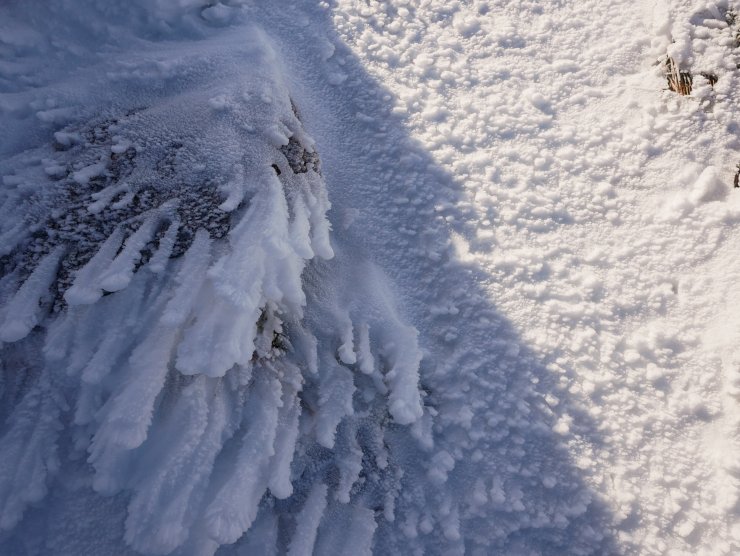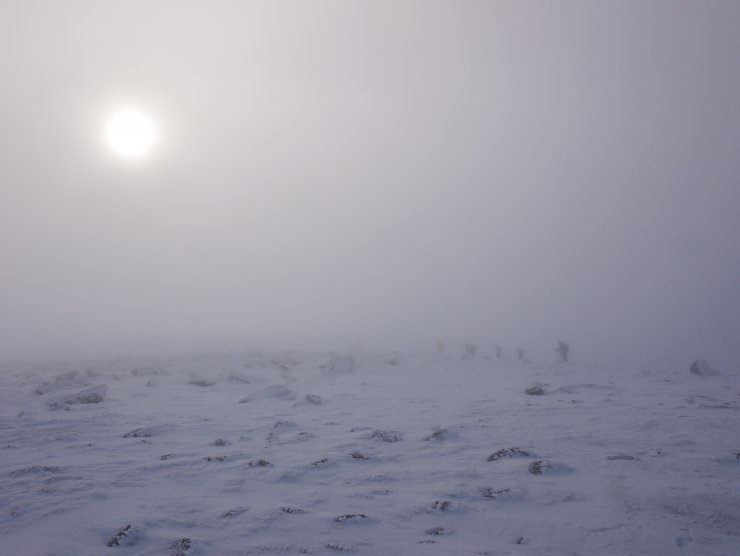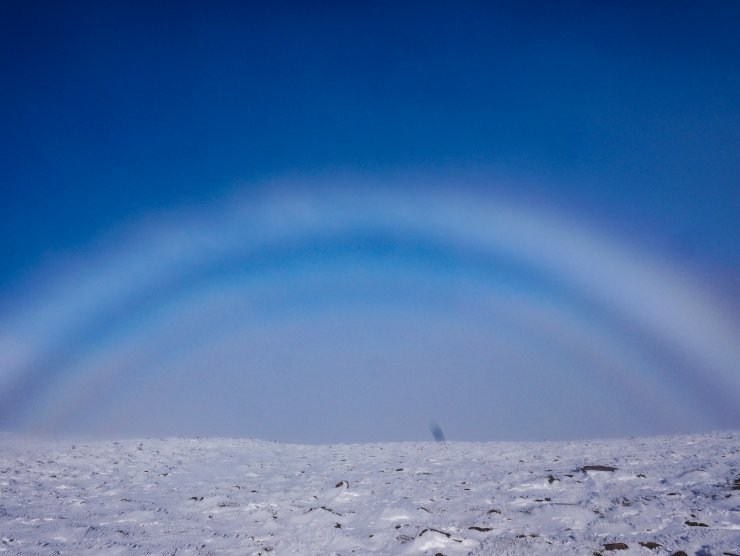Anticyclonic Gloom
28th February 2023
Despite the temperature inversion, the weather today was a stark contrast to yesterday with poor visibility in the form of an anticyclonic gloom. This is frequently the case in a stable airmass and seems to be common with light Northerly or North-Easterly winds which were a feature of today.
The snow surface was generally firm and icy, with some softer areas on South-East to South-West aspects. The crusty surface and rime deposits actually gave a reasonable ski today at higher elevations, although I am not sure there is a way of describing the conditions anywhere outside the Scottish Highlands. The snow surface became wet and soggy by late afternoon at all elevations due to trace precipitation in the cloud (rather than solar radiation).
As the winds strengthen tomorrow, these softer surface deposits along with older well bonded slab will start to become eroded creating new windslab on West to South aspects above 1000 metres. These deposits will most likely be shallow and avoidable, but will contain weaknesses where they achieve depth. Although the situation will change slightly, the avalanche hazard will be low.

Rime ice is evident on boulders above 1000 metres, with surface deposits of rime noted on the snow surface in many locations. This is quite soft and will most likely be eroded and transported as the winds strengthen tomorrow.

Despite the sun trying to break through at the highest elevations this was most peoples experience of today – poor visibility.
In a previous blog https://ncairngormsblog.sais.gov.uk/2023/02/el-alamein/] I promised to continue my description of the Cairngorm Granite pluton and the structural controls of Strath Nethy and the Lairig Ghru. These big valleys which cut through the main massif of the Cairngorms have always fascinated me as they don’t appear to be associated with major fault lines or even joint sets (i.e. cracks).
Following some curiosity googling I found an interesting paper which shares this observation, and goes further to say that the major valleys and glens show no consistent orientation with changes in rock type e.g. sheets of microgranitme or pegmatitic granite. Hall and Gillespie (2017), suggest that these major valleys are aligned to quartz veins and linear alteration zones (LAZ’s).
“LAZs are zones of weakness in the granite pluton in which late-stage hydrothermal alteration and hydro-fracturing have greatly reduced rock mass strength and increased permeability. LAZs, which can be kilometres long and >700 m deep, are the dominant controls on the orientation of valleys in the Cairngorms. LAZs formed in the roof zone of the granite intrusion.”
These big valleys have persisted through potentially more than 1km of vertical erosion and for 400 million years. The full paper can be read here at https://link.springer.com/article/10.1007/s00531-016-1423-z
This might go some way to explaining why Strath Nethy and the Lairig Ghru have been popular locations for quartz hunters in the past, as hydrothermal quartz is probably associated with these linear alteration zones. Not to mention the smoky quartz for which the Cairngorms are famous…
Comments on this post
Got something to say? Leave a comment





Richard
1st March 2023 8:59 am
Fascinating stuff. We have a budding geologist in the house who will take great interest in reading more. Thanks for the link.
Despite the less pleasing conditions, I’m glad the skiing was easier than on Monday. It did sound a bit uncomfortable as you departed Ben Macdui (I was the microspike-aided hill runner.)
ncairngormsadmin
1st March 2023 9:22 am
Excellent, interesting paper that one. Yes pretty rattly on Monday, I was quite jealous of the fell shoes and micro spikes!